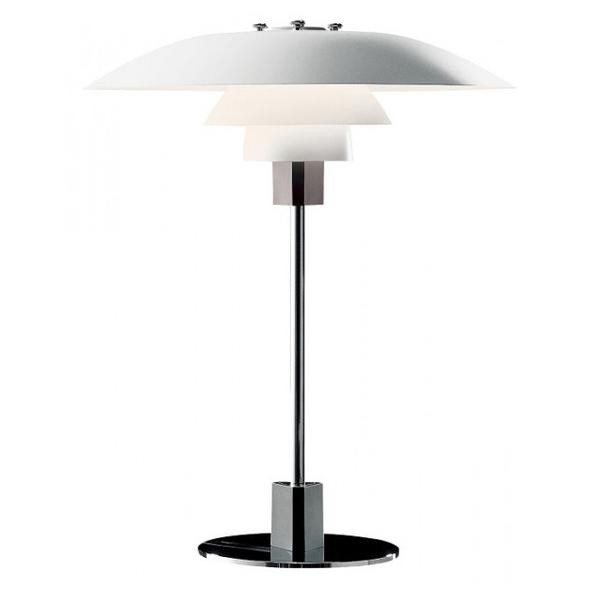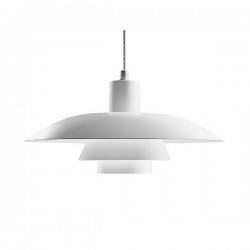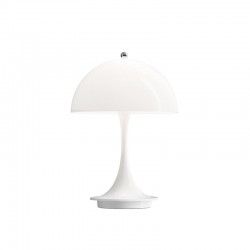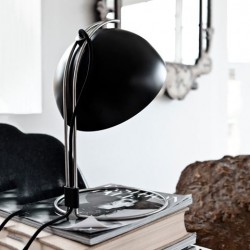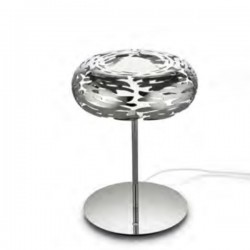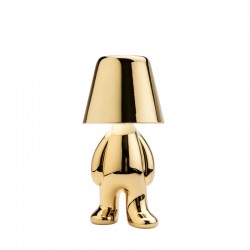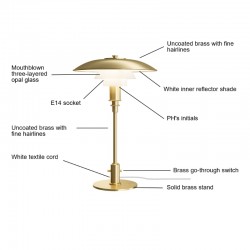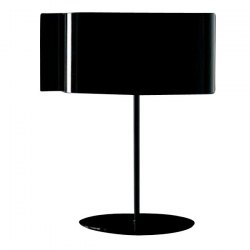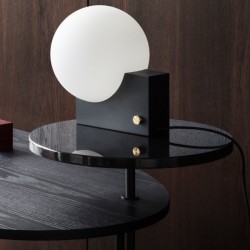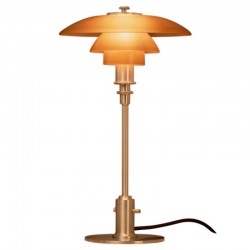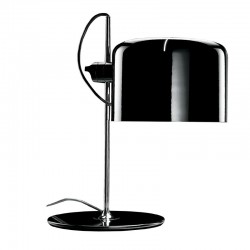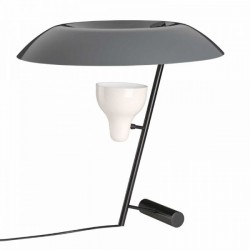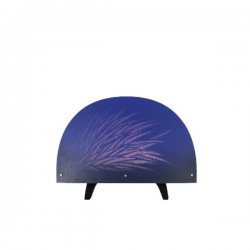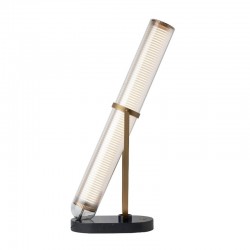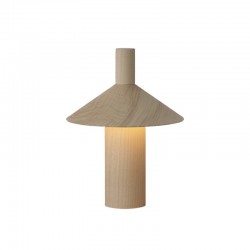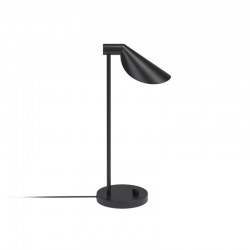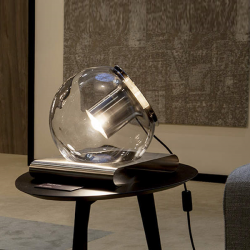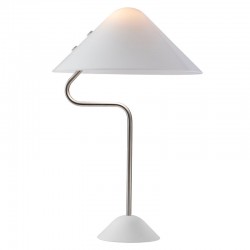Louis Poulsen PH 4/3 Table Lamp
The fixture is designed based on the principle of a reflective three-shade system, which directs the light downwards. The shades are made of metal and painted white to ensure diffuse, comfortable light distribution.
Can't find it! We can supply all products from Louis Poulsen, If you know what you are looking for and it is not yet featured, please send us a request
- Specifications
Finish:
White, powder coated. High lustre chrome plated.
Material:
Shades: Spun aluminium. Base: High lustre chrome plated, spun brass. Stem: High lustre chrome plated, steel. Triangular piece: Black sandblasted, injection moulded bakelite.
Mounting:
Cable type: Plastic cord with plug. Cable length: 2.9m. Light control: In-line switch on cord.
Weight:
Min: 2.3 kg Max: 3.0 kg
Class:
Ingress protection IP20. Electric shock protection II w/o ground.
Kindly note that this product is CE-approved only and should only be used in countries that follow and accept this standard. If it is used elsewhere it will be at the customer's sole risk, responsibility and liability.
- Size Description
Height: 54cm }
Diameter base: 21cm
-
Poul Henningsen
Poul Henningsen was born in Copenhagen by the famous Danish actress Agnes Henningsen. He never graduated as an architect, but studied at The Technical School at Frederiksberg, Denmark from 1911-14, and then at Technical College in Copenhagen from 1914-17. He started practicing traditional functionalistic architecture, but over the years his professional interests changed to focus mainly on lighting which is what he is most famous for. He also expanded his field of occupation into areas of writing, becoming a journalist and an author. For a short period at the beginning of WWII, he was the head architect of the Tivoli Gardens in Copenhagen. But like many other creative people, he was forced to flee Denmark during the German occupation but soon became a vital part of the Danish colony of artists living in Sweden.


 EUR
EUR

